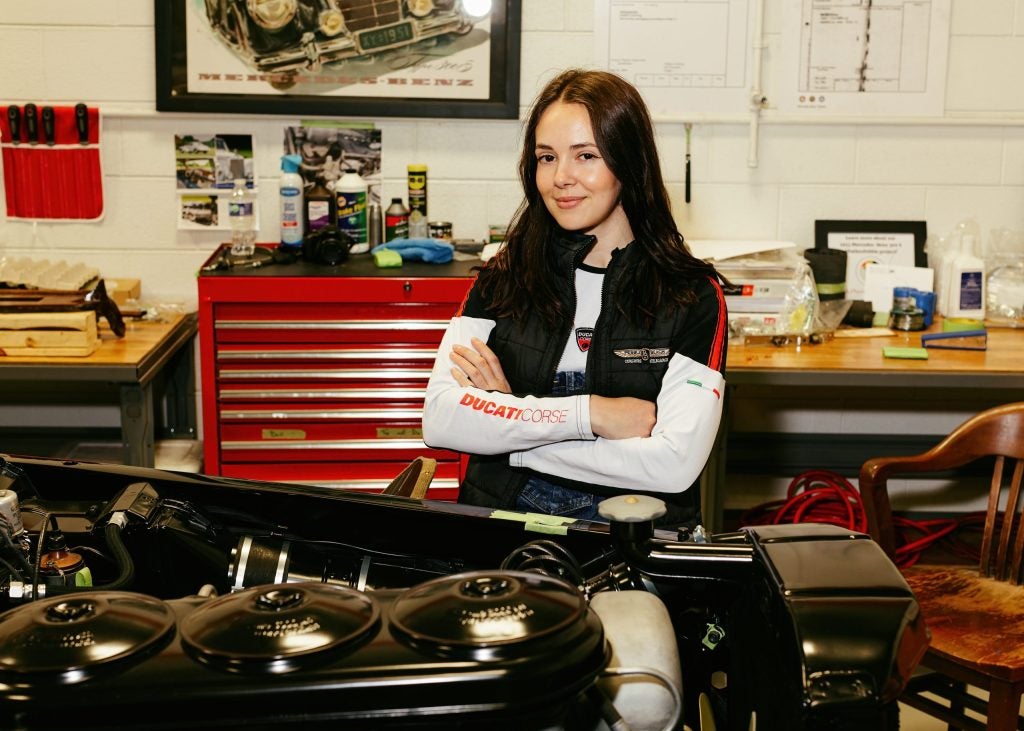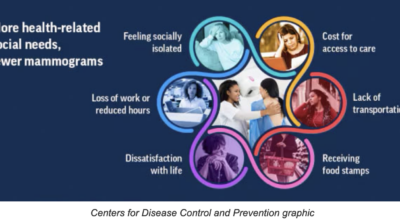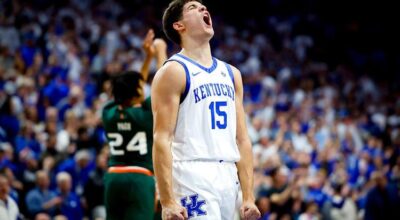Unusual majors help some colleges stand out from the crowd — and boost enrollment
Published 3:00 pm Friday, December 23, 2022

- Victoria Bruno, a senior at McPherson College majoring in automotive restoration. Bruno already has a job waiting for her after graduation rebuilding vintage Ferrari engines in Los Angeles. (Chase Castor/The Hechinger Report)
|
Getting your Trinity Audio player ready...
|
BY JON MARCUS
The Hechinger Report
So polished is the finish of the classic car that, like a mirror, it reflects the reverential faces staring at it.
Only 203 of this version of the iconic 1953 Mercedes-Benz 300S Cabriolet were ever built. They sold for three times the price of a Cadillac and were snapped up as status symbols by the likes of Clark Gable, Bing Crosby, Cary Grant and Gary Cooper.
Those famous names aren’t what interest the people in this garage bay, though. Their obsession is the car, which has been under restoration for six years by students at this college in sparsely settled central Kansas, in the hope that it will win the world’s most prestigious classic car event next summer: the annual Pebble Beach Concours d’Elegance.
That’s an unusual ambition for a small college — which is exactly the point. This particular small college has what it says is the country’s only four-year bachelor’s degree in automotive restoration, a major that combines engineering, history, business, communication, art and other disciplines.
It’s an example of the way a small regional higher education institution can stand out in a crowded field of competitors at a time when many other schools appear intent on trying to attract applicants by becoming more alike than different.
“There’s an entire culture around the classic car, and at the center of that world is McPherson College,” declared Michael Schneider, president of the college, which is home to this one-of-a-kind program in automotive engineering.
Not many people outside of its hometown of 14,000, named for Civil War Union General James Birdseye McPherson, have likely heard of the school. But there are enough devotees of classic cars, students who want to learn how to restore and preserve them and employers who need workers with those skills that its unusual specialty is paying off.
At a time when other colleges and universities are struggling for students, McPherson’s enrollment has been steadily increasing. Because its program is unique, it can cast a wider net than other colleges its size; its 851 students — up 18 percent over the last five years, according to figures provided by a spokesperson — come from 33 states and seven countries. Nearly twice as many apply to the automotive restoration program as can get in, and between 97 and 100 percent of graduates in each of the last three years have landed jobs in the industry.
The college just received a pledge worth up to $500 million, which appears to be the largest single gift ever to a small private college in America, from an anonymous donor represented by philanthropists who learned about McPherson from its work with cars. The program is increasingly attracting industry funding for research, and its connections with well-known collectors, including longtime supporter Jay Leno, give it celebrity cachet.
While a niche major can help a college stand apart, some institutions seem intent on blending in. Many have added bachelor’s degree programs, often based on their perceived popularity — 7,749 of them from 2012 to 2020, or an increase of 11 percent in the total number, according to the higher education consulting firm Eduventures. This at a time when enrollment of bachelor’s degree-seeking students has been flat. There are now more than 400 programs at various levels in cybersecurity, for instance.
“Every institution wants to become like the next institution up — more comprehensive, more elite,” said Colin Koproske, managing director and strategy research lead at EAB, another higher education consulting firm. “Everyone wants to be more nationally recognized for everything, and all of them use ubiquitous language that doesn’t help them stand out.”
Or, afraid of risk, universities and colleges insist on proof that an unusual program has already succeeded somewhere else, said another consultant, Jeff Spears, founder of CFO Colleague and a former CFO himself at several institutions, who often encourages client colleges to develop unique majors. “The school will say, ‘Can you give us the names of three people who do that already?’ And I would think, ‘Therein lies the problem.’ ”
It’s a stark contrast with other industries in which competitors rely on what economists call comparative advantage, said Sandra Peart, an economist and dean of the Jepson School of Leadership Studies at the University of Richmond: “It’s important to emphasize what’s different,” Peart said. “You want to say, ‘We do all of that, but we also have this other thing.’”
Leadership is another example of a niche major, one that University of Richmond officials credit with helping drive a record number of applicants in 2021, up 16 percent even when higher education enrollment overall was falling sharply; similar numbers applied again this year, a university spokeswoman said.
When Lauren Oligino was deciding among a list of colleges she eventually pared down to Richmond, she said, “I did find them as different variations of the same theme. I didn’t really notice that until I found something that stood out to me. That’s the reason so many people are coming here, is that no one else has this.”
Jeremy Porter had a similar experience. He was considering studying chemical engineering or pre-law at universities and colleges that included at least one in the Ivy League. But “there was nothing inherently unique about them. It’s the same exact thing.”
Porter ended up at McPherson, where he is now a junior in the automotive restoration program. Visiting the school convinced him that he wanted to work with his hands, he said.
The program started in 1976, when a local oil and gas magnate named Gaines “Smokey” Billue gave the college part of his vintage car collection. “It was hard for him to find people who could work on old cars, and those who could were dying out,” said Brian Martin, McPherson’s current-day director of restoration projects. “That ability to use their hands was dying.”
Students cycle through learning about engines, sheet metal, chassis, paint, trim, electric systems, assembly and woodworking and bend over sewing machines to re-create upholstery. The collection of cars on which they train spans the period from 1890 to 1973, meaning that parts have to be salvaged or made from scratch; shelves around the shop sag under the weight of old parts and engines.
Around 1998, the college was considering dropping the program. “It was a black sheep on the campus,” Martin said. “We didn’t know what to do with it.” Then Leno contributed money for scholarships. “He helped the college to realize we do have something special and unique.”
That distinctiveness is evident from just inside the entrance to the building where the labs and classrooms are housed. There, a glass-walled space called “the showroom” contains a bright red Austin Healey 100M that competed at Le Mans, a Ferrari 365 GT, classic BMW and Honda motorcycles from the 1950s and 1960s, as well as the naked chassis of a Corvette whose body is across the hallway in the paint shop.
It’s also clear from the enthusiasm of the students, self-described gearheads who survived a selection process that required them to submit portfolios of their past projects.
“If I was going to college, this was going to be it,” said junior Jimmy Pawlak, who has his own 1967 Chevelle.
“This is our passion. Back when we were in grade school this is what we did with our dads, our brothers. We’re doing this because we love it,” said Colby Marshall, a senior who transferred to McPherson from a college in Texas.
Sophomore Adam Hughes had never heard of McPherson, but once he learned about it, he concluded that, “for old cars, this is pretty much the only place to come.”
Students here “are doing something that we love,” said Victoria Bruno, a senior who already has a job waiting for her after graduation rebuilding vintage Ferrari engines in Los Angeles.
It’s a far cry from the gymnastics students elsewhere sometimes have to go through to explain why they’re in college, other than that their parents or high school teachers said they should go.
“Some kids grow up and they want to play football at Notre Dame or study science at MIT,” said Schneider, a graduate of McPherson himself who favors loafers and a sweater instead of a suit and tie and bears a passing likeness to the actor Matthew McConaughey. Students here, he said, “can’t wait to come to McPherson and study the car. There’s a stickiness there that lots of schools don’t get.”
And it’s not confined to the classroom. There’s a C.A.R.S. club — it stands for College Auto Restoration Students — that hosts events, and a complex of storage sheds across the street from the campus where many students keep and work on their own cars in their free time. About 20 percent of the students here are majoring in automotive restoration.
“Come over here on a Saturday afternoon, go over to the sheds and our kids are talking about engines that they’re swapping out or paint jobs that they’re doing,” said Schneider, who has a 1966 Pontiac Tempest at home and a vintage Mercedes-Benz poster on his office wall.
They also go to car events from coast to coast and shadow mechanics during shows, tours and rallies, which often leads to jobs.
“It’s like a fraternity where former classmates and graduates help each other out,” said Martin.
The school is interwoven with the industry “because they have this niche,” said Cameron Luther, a senior who spent the summer working for a company that sells classic cars. “There are alumni all across the world from here.”
The instructors seem equally ardent. Martin’s colleagues say he’s been known to come in at 2 a.m. to check the temperature in the bay where work is under way on that Mercedes, which he declines a photographer’s request to lean against for fear of dulling the finish. (A similar car, in worse condition, recently sold for $800,000.)
The money from the $500 million pledge will not only help support a new climate-controlled building to store the college’s vintage cars and a center for the future of engineering and design, but also provide funding for financial aid, a 55,000-square-foot student center that broke ground in November and a center for rural and community health science.
That’s part of the “halo effect” unusual majors can bring to colleges that offer them, said Schneider and others.
“You might come here because of your interest in the car, and then you find out, oh, they’ve got this major in multimedia design or business,” Schneider said of how the auto restoration program helps the more than 40 other majors at McPherson. “It’s not so much different from Apple having an iPhone so you buy their earbuds and all the other things that Apple sells. It’s a business strategy.”
Other examples include writing at the University of Iowa, journalism at the University of Missouri, music at Oberlin College, dance band at the University of North Texas and the commercial songwriting major at public Middle Tennessee State University.
The songwriting program has in past years attracted more out-of-state students than any other department, said Beverly Keel, dean of its parent College of Media and Entertainment. “People come here just for that.”
“It’s not enough to be different,” she added. “You have to be very good at what you do. You have to be the best at it.”
Some niche majors may actually be loss leaders, not earning more than they cost to provide, Koproske said. It can still be a valuable strategy, however.
“I don’t know if they’re making money off these things,” Koproske said. “But, man, are they on the map because of them.”
This story was produced by The Hechinger Report, a nonprofit, independent news organization focused on inequality and innovation in education. It can be found online www.hechingerreport.org/unusual-majors-help-some-colleges-stand-out-from-the-crowd-and-boost-enrollment.





